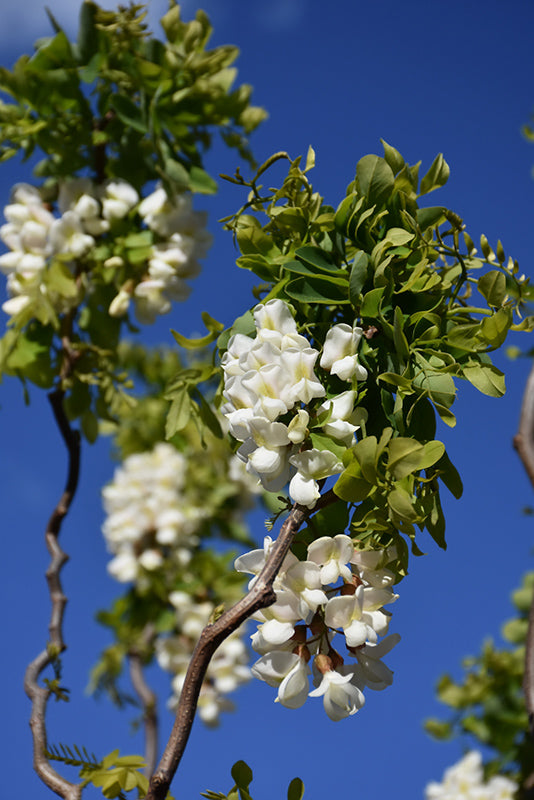Lace Lady Robinia or Twisted Baby® Black Locust is primarily valued in the landscape or garden for its ornamental globe-shaped form. It has bluish-green deciduous foliage. The oval pinnately compound leaves turn yellow in fall. The twisted black bark and brown branches are extremely showy and add significant winter interest.
Landscape Attributes
Twisted Baby® Black Locust is a multi-stemmed deciduous shrub with a more or less rounded form. It lends an extremely fine and delicate texture to the landscape composition which can make it a great accent feature on this basis alone.
This is a high maintenance shrub that will require regular care and upkeep, and is best pruned in late winter once the threat of extreme cold has passed. Deer don't particularly care for this plant and will usually leave it alone in favor of tastier treats.
Planting & Growing
Twisted Baby® Black Locust will grow to be about 10 feet tall at maturity, with a spread of 12 feet. It has a low canopy with a typical clearance of 2 feet from the ground, and is suitable for planting under power lines. It grows at a fast rate, and under ideal conditions can be expected to live for 60 years or more.
This shrub does best in full sun to partial shade. It is very adaptable to both dry and moist growing conditions, but will not tolerate any standing water. It is not particular as to soil type or pH, and is able to handle environmental salt. It is highly tolerant of urban pollution and will even thrive in inner city environments. This is a selection of a native North American species.
Details
Botanical Name
Robinia pseudoacasia 'Twisty Baby'
Common Name
Lace Lady Robinia
Hardiness Zone
- 5a
Appearance
Max Height
10 feet
Max Spread
12 feet
Plant Form
Foliage Colour
- Bluish Green
Fall Colour
- Yellow
Flower Colour
- White
Edible
Edible Component
Edible Harvest Period
Edible Use
Fruit Colour
Growing
Flowering Period
Moisture
Dry to Moist
Sunlight
Full Sun to Partial Shade
Maintenance
High
Deer Resistance
YES
Get more information about this plant and others with our comprehensive plant finder tool.




